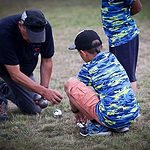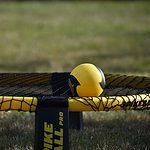When you think of an advanced player in badminton, what image springs to mind? You likely envision someone who not only knows the rules but bends them to their will with a flick of the wrist and a flash of the shuttlecock.
As an advanced player, you're distinguished by your ability to make split-second decisions, execute complex shots with ease, and move on the court with a dancer's grace.
But what truly sets you apart in this fast-paced, precision-driven sport? Is it merely the honing of skills and tactics, or does it go beyond to include mental fortitude and a relentless dedication to training?
As you consider your own journey towards mastery, reflect on the elements that transform a good player into an exemplary one, and ponder the unseen trials they endure to claim the title of 'advanced'.
Key Takeaways
- An advanced player in badminton possesses exceptional footwork, a diverse arsenal of shots, and a strategic understanding of the game.
- They have mastered attack and defense transitions, as well as various drills such as the Doubles Drive Drill, Doubles Smash Drill, Multi-Shuttle Net Drill, and Doubles Attacking Drill to improve their skills.
- Advanced players have nuanced aspects of the game, including the ability to execute front net attacks, backhand clears, and net shot skills, as well as understanding opponent's playstyles and crafting game plans accordingly.
- Physical fitness is crucial for advanced players, with emphasis on cardiovascular endurance, muscular strength, flexibility, and agility. They follow a tailored training regimen that includes footwork drills, HIIT, targeted strength exercises, and regular endurance training. Mental toughness, consistency, and goal-setting are also important aspects of their training.
Defining Advanced Skillset
An advanced badminton player's skillset breaks down into exceptional footwork, a diverse arsenal of shots, strategic understanding, and the ability to execute complex drills with precision.
As an advanced level player, you've honed your footwork to a point where you glide across the court, conserving energy for that explosive power needed in a jump smash or net kill. You don't just play serious badminton; you embody the strategy and agility expected of a champion.
Your shot selection isn't random but a result of meticulous practice and match experience. Executing a backhand clear or a deceptive drop shot comes naturally to you, a testament to your top level player status. You're no stranger to the rigors of professional badminton, where footwork drills become second nature and doubles positioning is orchestrated with your partner like a well-rehearsed dance.
You understand that a robust defense drill is as crucial as your offense. In the heat of a rally, you switch from attack to defense seamlessly, showcasing your advanced level player capabilities. Your gameplay isn't just about individual brilliance; it's about how well you read the game, anticipate your opponent's moves, and apply your practiced skills to gain the upper hand.
Technical Proficiency
Mastering the proper grip, stance, and swing is crucial for executing shots with both power and precision, a fundamental aspect of technical proficiency in badminton. You've got to be adept at a variety of shots and strategies to keep your opponents guessing and on their toes.
- Essential Drills for Technical Proficiency
- *Doubles Drive Drill*: Hone your reaction time and flat exchanges.
- *Doubles Smash Drill*: Practice power and placement in tandem play.
- *Multi-Shuttle Net Drill*: Enhance your net shot skills and front net attack.
As an advanced player, your arsenal should include a devastating jump smash, a reliable backhand clear, and a sharp net kill drill to finish points decisively. But it's not just about those headline-grabbing shots. You'll need to excel in the nuances of the game:
- Nuanced Aspects
- *Doubles Attacking Drill*: Coordinate with your partner for relentless pressure.
- *Smash and Drive Drill*: Transition between offensive shots seamlessly.
- *Net Shot Skills*: Execute tight net shots to force lift and gain the attack.
Remember, technical proficiency isn't just about individual brilliance; it's about meshing your skills within the strategic framework of the game:
- Strategic Integration
- *Front Net Attack*: Command the rally by seizing control at the net.
- *Backhand Clear*: Use it defensively and offensively to maintain rally structure.
With persistent practice of these drills and techniques, you'll not only refine your skills but also develop the strategic insight essential for advanced badminton play.
Tactical Knowledge
Understanding your opponent's playstyle and crafting a game plan to counter it is pivotal in the tactical domain of badminton. At the top level, this isn't just about knowing the basics; it's about elevating your game to the advanced echelons where every move is a calculated step. Your tactical acumen must encompass proficiency in shot selection, from the precision of a well-timed drive to the power of a decisive smash.
In doubles, the tactics shift; the doubles serve and return become critical phases of play. You've got to sync with your partner, predicting and intercepting shots, turning defense into offense in a blink.
In mixed doubles, the strategies further diversify, demanding an acute awareness of positioning and role adaptation.
Refinement of these advanced tactics requires dedicated practice. Footwork drills aren't just routine; they're tailored to simulate match scenarios, enhancing your agility and reaction time. The full court combined drill isn't merely a test of endurance but a comprehensive challenge, integrating movement, strokes, and strategy into one fluid performance.
Mastering these elements isn't just about physical prowess; it's a mental chess game where every step is a move towards checkmate.
Physical Fitness
While tactical acumen sharpens your game mentally, maintaining peak physical fitness is equally crucial for executing those strategies effectively on the badminton court. As a badminton player in the United States, striving for the top level, it's essential to have a holistic approach to your physical fitness. It's not just about hitting the shuttle; your body must be primed for the rigors of the game.
- Physical Fitness Components
- *Cardiovascular Endurance*: Essential for maintaining energy throughout matches.
- *Muscular Strength*: Increases power behind shots and aids in quick, explosive movements.
- *Flexibility*: Enhances your reach and reduces injury risks.
Incorporating specific badminton drills into your routine can address these fitness components effectively:
- Tailored Drills
- *Footwork Drills*: Critical for agility and court coverage.
- *Combined Singles Drill*: Mixes endurance and strength for the solo athlete in USA Badminton.
- *Doubles Defensive Drill and Serve and Return Drill*: Hones reflexes and strategic play.
A comprehensive video resource for any serious player offers visual guidance and structured plans. It's vital to consult a fitness expert to customize a plan that suits your unique needs, ensuring you're not just fit but badminton-ready.
Mental Toughness
Developing mental toughness is essential for you as a badminton player, as it enables you to maintain focus and resilience when facing the inevitable pressures of competition. This trait is especially crucial at the Olympic level, where the margin for error is infinitesimal and the mental demands are intense.
Cultivating a positive and adaptable mindset isn't just helpful; it's a prerequisite for those aiming to be champions.
To enhance your mental toughness, integrate techniques like visualization and goal-setting. Visualization helps you anticipate and strategize for every possible scenario on the court, while goal-setting provides a roadmap to your accomplishments. Positive self-talk is your ally, reinforcing your confidence and warding off doubts.
Remember, it's not just about handling success; it's about how you embrace failure. Viewing setbacks as learning opportunities is what separates seasoned players from novices. It's this composure in high-pressure situations that has often combined to catapult players among the ranks of the greatest.
As you aim to join these elite ranks, recognize that mental toughness takes more than just practice—it takes a relentless desire to push beyond your limits. It's this unyielding spirit that's regarded as the hallmark of a true badminton champion.
Training Regimen
Building on the foundation of mental toughness, your training regimen is the next critical step to elevating your badminton game to the highest levels of competition. A well-structured training regimen, endorsed by top ranked players, is a blend of the following elements:
- Cardiovascular Fitness & Strength Training
- High-intensity interval training (HIIT) for stamina
- Strength exercises targeting all key muscle groups
- Agility Drills & Footwork
- Ladder drills and cone drills to enhance footwork
- Kevin demonstrates and explains how to maximize court coverage
- Specific Badminton Skills
- Regular practice of clears, drops, smashes, and drives
- Match simulations to hone strategic play
You'll need to incorporate rigorous footwork drills, as they're the cornerstone of your ability to maneuver swiftly across the court. Kevin, one of the top players, explains everything it takes to become a top level competitor with the help of 13-time United States champion coaching insights. This video is a must for those aspiring to replicate the success of elite badminton athletes.
Among the topics covered, you'll find that endurance is built through shuttle run drills and match play, ensuring you're as relentless in the final points as you're at the start. Remember, consistency in your training regimen is the key to transcending the ordinary.





